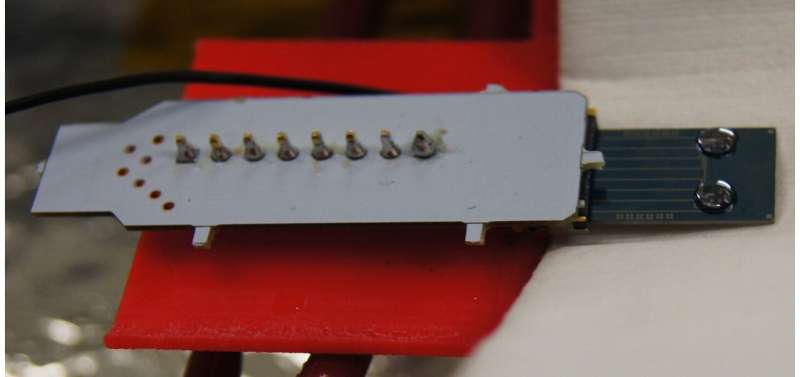Detecting viruses in a pinprick

Scientists at Swansea University, Biovici Ltd and the National Physical Laboratory have developed a method to detect viruses in very small volumes.
The work, published in Advanced NanoBiomed Research, follows a successful Innovate U.K. project developing graphene for use in biosensors—devices that can detect tiny levels of disease markers.
For many parts of the world that do not have access to high-tech labs found in hospitals, detecting viruses such as hepatitis C (HCV)—could save millions of preventable deaths worldwide. In addition, biosensors such as this could be used at the point-of-care—opening effective health care in difficult-to-reach settings.
What makes the detection of viruses in such small volumes possible is the use of a material called graphene. Graphene is extremely thin—only one atom thick—making it very sensitive to anything that attaches to it. By carefully controlling its surface, scientists at Swansea University were able to make the surface of graphene sensitive to the HCV virus. These measurements were done with graphene specialists at the National Physical Laboratory.
In the future, it is hoped that multiple biosensors can be developed onto a single chip—this could be used to detect different types of dangerous viruses or disease markers from a single measurement.
Ffion Walters, Innovation Technologist at Swansea University's Healthcare Technology Center said: "Highly sensitive and simplistic sensors have never been more in demand with regards point-of-care applications. This collaborative project has allowed us to realize proof-of-concept real-time sensors for HCV, which could be especially beneficial in resource-limited settings or for difficult-to-reach populations."
Professor Owen Guy, Head of Chemistry at Swansea University, said: "At Swansea University, we have now developed graphene-based biosensors for both Hepatitis B and C. This is a major step forward to a future single point of care test."
Dr. Olga Kazakova, NPL Fellow Quantum Materials & Sensors added: "NPL was delighted to be part of this multidisciplinary team. Participation in this project allowed us to further develop our metrological validation facilities and apply them to the characterization of graphene biosensors and aid in solving an important challenge in the health sector."
More information: Ffion Walters et al, A Rapid Graphene Sensor Platform for the Detection of Viral Proteins in Low Volume Samples, Advanced NanoBiomed Research (2022). DOI: 10.1002/anbr.202100140
Provided by Swansea University



















